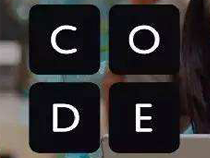Android实现3种侧滑效果(仿qq侧滑、抽屉侧滑、普通侧滑)
更新时间:2017年04月19日 14:49:02 作者:gywuhengy
这篇文章主要为大家详细介绍了Android实现多种侧滑效果,包括仿qq侧滑,抽屉侧滑,普通侧滑三种效果,具有一定的参考价值,感兴趣的小伙伴们可以参考一下
自己实现了一下侧滑的三种方式(注释都写代码里了)
本文Demo下载地址:Andriod侧滑
本文实现所需框架:nineoldandroids下载地址:nineoldandroids
1.普通侧滑:
主要是基于HorizontalScrollView做的:示例代码如下
主要布局:
<?xml version="1.0" encoding="utf-8"?> <RelativeLayout xmlns:android="http://schemas.android.com/apk/res/android" xmlns:gaoyu="http://schemas.android.com/apk/res/gaoyu.com.myapplication" xmlns:tools="http://schemas.android.com/tools" android:id="@+id/activity_qqsideslip" android:layout_width="match_parent" android:layout_height="match_parent" tools:context="gaoyu.com.myapplication.sideslip.QQSideslipActivity"> <!--xmlns:gaoyu自定义命名空间 原有到res+包名--> <gaoyu.com.myapplication.sideslip.SlidingMenu_qq android:id="@+id/SlMenu_sideslip" android:layout_width="wrap_content" android:layout_height="fill_parent" gaoyu:rightPadding="100dp"> <LinearLayout android:layout_width="wrap_content" android:layout_height="match_parent" android:orientation="horizontal"> <include layout="@layout/sideslip_menu" /> <!--这个LinearLayout就是content--> <LinearLayout android:layout_width="match_parent" android:layout_height="match_parent" android:background="@drawable/sliding"> <Button android:layout_width="wrap_content" android:layout_height="wrap_content" android:onClick="onClick_sideslip_qq" android:text="切换菜单" /> </LinearLayout> </LinearLayout> </gaoyu.com.myapplication.sideslip.SlidingMenu_qq> </RelativeLayout>
菜单的布局
<?xml version="1.0" encoding="utf-8"?> <RelativeLayout xmlns:android="http://schemas.android.com/apk/res/android" android:layout_width="match_parent" android:layout_height="match_parent" android:orientation="vertical"> <LinearLayout android:layout_width="match_parent" android:layout_height="wrap_content" android:orientation="vertical" android:layout_centerInParent="true"> <RelativeLayout android:layout_width="fill_parent" android:layout_height="wrap_content"> <ImageView android:id="@+id/iv_sideslip1" android:layout_width="50dp" android:layout_height="50dp" android:layout_marginTop="20dp" android:layout_marginBottom="20dp" android:layout_marginLeft="20dp" android:src="@drawable/icon"/> <TextView android:layout_centerVertical="true" android:layout_width="wrap_content" android:layout_height="wrap_content" android:layout_toRightOf="@+id/iv_sideslip1" android:layout_marginLeft="20dp" android:text="第一个item"/> </RelativeLayout> <RelativeLayout android:layout_width="fill_parent" android:layout_height="wrap_content"> <ImageView android:id="@+id/iv_sideslip2" android:layout_width="50dp" android:layout_height="50dp" android:layout_marginTop="20dp" android:layout_marginBottom="20dp" android:layout_marginLeft="20dp" android:src="@drawable/icon"/> <TextView android:layout_centerVertical="true" android:layout_width="wrap_content" android:layout_height="wrap_content" android:layout_toRightOf="@+id/iv_sideslip2" android:layout_marginLeft="20dp" android:text="第二个item"/> </RelativeLayout><RelativeLayout android:layout_width="fill_parent" android:layout_height="wrap_content"> <ImageView android:id="@+id/iv_sideslip3" android:layout_width="50dp" android:layout_height="50dp" android:layout_marginTop="20dp" android:layout_marginBottom="20dp" android:layout_marginLeft="20dp" android:src="@drawable/icon"/> <TextView android:layout_centerVertical="true" android:layout_width="wrap_content" android:layout_height="wrap_content" android:layout_toRightOf="@+id/iv_sideslip3" android:layout_marginLeft="20dp" android:text="第三个item"/> </RelativeLayout><RelativeLayout android:layout_width="fill_parent" android:layout_height="wrap_content"> <ImageView android:id="@+id/iv_sideslip4" android:layout_width="50dp" android:layout_height="50dp" android:layout_marginTop="20dp" android:layout_marginBottom="20dp" android:layout_marginLeft="20dp" android:src="@drawable/icon"/> <TextView android:layout_centerVertical="true" android:layout_width="wrap_content" android:layout_height="wrap_content" android:layout_toRightOf="@+id/iv_sideslip4" android:layout_marginLeft="20dp" android:text="第四个item"/> </RelativeLayout><RelativeLayout android:layout_width="fill_parent" android:layout_height="wrap_content"> <ImageView android:id="@+id/iv_sideslip5" android:layout_width="50dp" android:layout_height="50dp" android:layout_marginTop="20dp" android:layout_marginBottom="20dp" android:layout_marginLeft="20dp" android:src="@drawable/icon"/> <TextView android:layout_centerVertical="true" android:layout_width="wrap_content" android:layout_height="wrap_content" android:layout_toRightOf="@+id/iv_sideslip5" android:layout_marginLeft="20dp" android:text="第五个item"/> </RelativeLayout> </LinearLayout> </RelativeLayout>
定义view类
public class SlidingMenu_qq extends HorizontalScrollView {
private LinearLayout mWapper;
private ViewGroup mMenu;
private ViewGroup mContent;
//menu的宽度
private int mMenuWidth;
//屏幕的宽度(内容区的宽度就是屏幕宽度)
private int mScreenWdith;
//菜单与右边的距离50dp
private int mMenuRightPidding = 50;
//调用一次
private boolean once;
//标识状态
private boolean isOPen;
/**
* 未使用自定义属性时调用
* 由于设置了attr所以...
*
* @param context
* @param attrs
*/
public SlidingMenu_qq(Context context, AttributeSet attrs) {
//调用三个参数的构造方法
this(context, attrs, 0);
//获取屏幕宽度(窗口管理器)
/*WindowManager wm = (WindowManager) context.getSystemService(Context.WINDOW_SERVICE);
//展示度量
DisplayMetrics outMetrics = new DisplayMetrics();
wm.getDefaultDisplay().getMetrics(outMetrics);
mScreenWdith = outMetrics.widthPixels;
//把dp转换成px
mMenuRightPidding = (int) TypedValue.applyDimension(TypedValue.COMPLEX_UNIT_DIP, 50, context.getResources().getDisplayMetrics());
*/
}
/**
* 当实现自定义属性时会执行三个参数的方法
*
* @param context
* @param attrs
* @param defStyleAttr
*/
public SlidingMenu_qq(Context context, AttributeSet attrs, int defStyleAttr) {
super(context, attrs, defStyleAttr);
//获取自定义的属性
TypedArray a = context.getTheme().obtainStyledAttributes(attrs, R.styleable.SlidingMenu_qq, defStyleAttr, 0);
//自定义属性个数
int n = a.getIndexCount();
for (int i = 0; i < n; i++) {
int attr = a.getIndex(i);
switch (attr) {
case R.styleable.SlidingMenu_qq_rightPadding:
//设置默认值是50dp
mMenuRightPidding = a.getDimensionPixelSize(attr, (int) TypedValue.applyDimension(TypedValue.COMPLEX_UNIT_DIP, 50, context.getResources().getDisplayMetrics()));
break;
}
}
//释放一下
a.recycle();
//获取屏幕宽度(窗口管理器)
WindowManager wm = (WindowManager) context.getSystemService(Context.WINDOW_SERVICE);
//展示度量
DisplayMetrics outMetrics = new DisplayMetrics();
wm.getDefaultDisplay().getMetrics(outMetrics);
mScreenWdith = outMetrics.widthPixels;
}
/**
* new 一个TextView时传一个上下文
*
* @param context
*/
public SlidingMenu_qq(Context context) {
//调用两个参数的构造方法
super(context, null);
}
/**
* 设置HorizontalScrollView子VIew的宽和高
* 设置HorizontalScrollView自己的宽和高
*
* @param widthMeasureSpec
* @param heightMeasureSpec
*/
@Override
protected void onMeasure(int widthMeasureSpec, int heightMeasureSpec) {
//设置循环之调用一次
if (!once) {
//HorizontalScrollView 内部只能有一个元素 所以直接get(0)就行就是那个Linerlayout mWapper
mWapper = (LinearLayout) getChildAt(0);
//获取mWapper里的第一个元素menu
mMenu = (ViewGroup) mWapper.getChildAt(0);
//获取mWapper里的第二个元素content
mContent = (ViewGroup) mWapper.getChildAt(1);
//菜单和内容宽度
mMenuWidth = mMenu.getLayoutParams().width = mScreenWdith - mMenuRightPidding;
mContent.getLayoutParams().width = mScreenWdith;
//由于子对象被设置了,mWapper就先不用了
once = true;
}
super.onMeasure(widthMeasureSpec, heightMeasureSpec);
}
/**
* 通过设置偏移量 将menu隐藏
* @param changed
* @param l
* @param t
* @param r
* @param b
*/
@Override
protected void onLayout(boolean changed, int l, int t, int r, int b) {
super.onLayout(changed, l, t, r, b);
//限制多次调用
if (changed) {
//x为正滚动条向右 内容向左(移动mMenuWidth 正好将菜单隐藏)
this.scrollTo(mMenuWidth, 0);
}
}
/**
* 判断将菜单滑出来多少了
*
* @param ev
* @return
*/
@Override
public boolean onTouchEvent(MotionEvent ev) {
int action = ev.getAction();
switch (action) {
case MotionEvent.ACTION_UP:
//隐藏在左边的宽度
int scrollX = getScrollX();
if (scrollX >= mMenuWidth / 2) {
//scrollTo也行但是动画效果不好 (隐藏)
this.smoothScrollTo(mMenuWidth, 0);
//代表菜单隐藏
isOPen = false;
} else {
this.smoothScrollTo(0, 0);
//表菜单打开
isOPen = true;
}
return true;
}
return super.onTouchEvent(ev);
}
/**
* 打开菜单
*/
public void openMenu() {
//已经打开
if (isOPen) return;
this.smoothScrollTo(0, 0);
isOPen = true;
}
/**
* 关闭菜单
*/
public void closeMenu() {
//正在打开
if (!isOPen) return;
this.smoothScrollTo(mMenuWidth, 0);
isOPen = false;
}
/**
* 切换菜单
*/
public void toggle(){
if (isOPen){
closeMenu();
}else {
openMenu();
}
}
}
2.抽屉侧滑(添加此方法)
/**
* 实现抽屉滑动
* l隐藏在左边的宽度
* 后边是变化梯度
*/
@Override
protected void onScrollChanged(int l, int t, int oldl, int oldt) {
super.onScrollChanged(l, t, oldl, oldt);
float scale = l*1.0f/mMenuWidth;//1~0梯度的值
//调用属性动画
ViewHelper.setTranslationX(mMenu,mMenuWidth*scale);
}
3.qq5.0侧滑,实现这个方法
/**
* 实现仿qq5.0
* l等于隐藏在左边的宽度(越来越小)
* 后边是变化梯度
*/
@Override
protected void onScrollChanged(int l, int t, int oldl, int oldt) {
super.onScrollChanged(l, t, oldl, oldt);
float scale = l * 1.0f / mMenuWidth;//1~0梯度的值
//调用属性动画
//菜单的缩放操作
float leftScale = 1.0f-scale*0.3f;
//透明度
float leftAlpha = 0.6f + 0.4f*(1-scale);
ViewHelper.setTranslationX(mMenu, mMenuWidth * scale*0.8f);
ViewHelper.setScaleX(mMenu,leftScale);
ViewHelper.setScaleY(mMenu,leftScale);
ViewHelper.setAlpha(mMenu,leftAlpha);
//内容区域不断缩小
float rightScale = 0.7f+0.3f*scale;
//横向纵向缩放(不更改缩放中心点就全隐藏了)
ViewHelper.setPivotX(mContent,0);
ViewHelper.setPivotY(mContent,mContent.getHeight()/2);
ViewHelper.setScaleX(mContent,rightScale);
ViewHelper.setScaleY(mContent,rightScale);
}
更多学习内容,可以点击《Android侧滑效果汇总》学习。
以上就是本文的全部内容,希望对大家的学习有所帮助,也希望大家多多支持脚本之家。
相关文章

Android 通过cmake的方式接入opencv的方法步骤
这篇文章主要介绍了Android 通过cmake的方式接入opencv的方法步骤,文中通过示例代码介绍的非常详细,对大家的学习或者工作具有一定的参考学习价值,需要的朋友们下面随着小编来一起学习学习吧2020-04-04
Android自定义Seekbar滑动条 Pop提示跟随滑动按钮滑动
这篇文章主要为大家详细介绍了Android自定义Seekbar滑动条,Pop提示跟随滑动按钮滑动,文中示例代码介绍的非常详细,具有一定的参考价值,感兴趣的小伙伴们可以参考一下2018-07-07
详解Android Automotive车载应用对驾驶模式Safe Drive Mode的适配
这篇文章主要介绍了详解Android Automotive车载应用对驾驶模式(Safe Drive Mode)的适配,对车载应用感兴趣的同学可以参考下2021-04-04












最新评论